XR Development: Confronting Three Critical Bottlenecks
Amid the ever-growing array of tech offerings, XR—encompassing virtual reality (VR), augmented reality (AR), and mixed reality (MR)—undoubtedly stands out for its vast potential. The appeal of XR lies in addressing our innate demand for visual information: roughly 85% of our knowledge is acquired through sight, and products which reinvent visual engagement often spark revolutionary breakthroughs. Magazines, television, film, and short-form video have all galvanized new eras by reshaping how we see the world. Whether AR or VR, both technologies enable users to transcend physical boundaries, expanding their horizons in ways previously unimaginable.
XR thus serves not only as a novel medium for information display but also as a groundbreaking interface paradigm—widely heralded as the next major technological gateway after smartphones. Industry experts believe that widespread XR adoption will unlock tens of billions of dollars in market value.
Despite its promising future, XR still faces several challenges. These range from high development costs and complex product design to the scarcity of compelling long-term user scenarios. Despite substantial efforts by major industry players, XR has yet to witness the dramatic “explosive moment” that once catapulted smartphones to worldwide prominence.
Fortunately, ongoing technological advancements are steadily addressing three fundamental barriers hindering XR: product positioning, technical roadmap, and manufacturing capabilities.
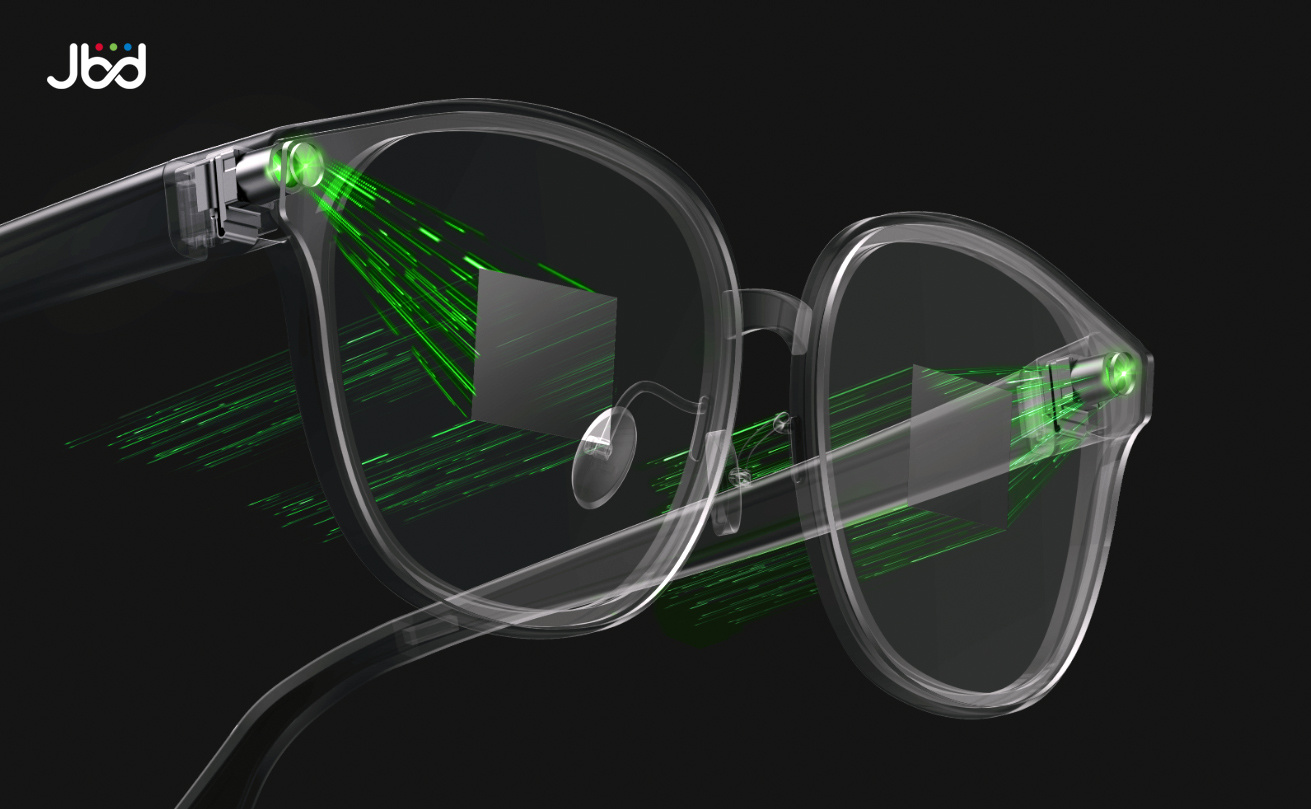
1. Breakthroughs in Product Positioning
Early XR products were often encumbered by a technology-driven mindset that overlooked genuine user needs. Research teams tended to chase the vision of an “ultimate product” without considering iterative improvements guided by real-world feedback. This fixation on perfection weighed down AR solutions—literally and figuratively—resulting in heavy devices with short battery life, high costs, and excessive power consumption, all of which stifled their adoption and practical appeal.
Through persistent trial and error, XR product strategies have become more grounded. Companies are increasingly developing solutions rooted in tangible user requirements and focusing on addressing pain points in specific use cases.
Lightweight AR glasses, designed for all-day wear, represent a notable trend. These smart glasses frequently integrate AI capabilities—such as translation, navigation, virtual meetings, or personal assistance—offering clearer value propositions and higher utility. Compared to traditional XR headsets, they boast significantly improved power efficiency, longer battery life, and reduced weight. Their price range, now generally hovering between $300 and $600, makes them far more approachable than many VR alternatives.
Moreover, recent AR glasses that closely resemble ordinary eyewear, elegantly balancing style with practicality. This streamlined design has swiftly captured the attention of a growing consumer base, prompting leading manufacturers to race for a foothold in this burgeoning market.
According to IDC, thanks to new technological breakthroughs and more affordable price tags, mixed reality and augmented reality hardware are projected to grow by 41.4% year-over-year in 2025.[1]
2. Maturing Technical Roadmap
Technological innovation forms another crucial bottleneck for XR. Historically, diverse optical-display methods and manufacturers’ varying priorities hindered economies of scale. This fragmentation slowed cost reduction and market penetration.
For AR devices in particular, the display module constitutes a sizable portion of overall costs and directly determines the user’s visual experience. AR optical display approaches generally fall into two categories: Optical See-Through (OST) and Video See-Through (VST). VST uses cameras to capture real-world imagery, projecting it onto a screen, making it ideal for scenarios that emphasize high-level virtual immersion. OST, on the other hand, projects digital visuals into the user’s direct line of sight, offering superior potential for lightweight and day-to-day use.
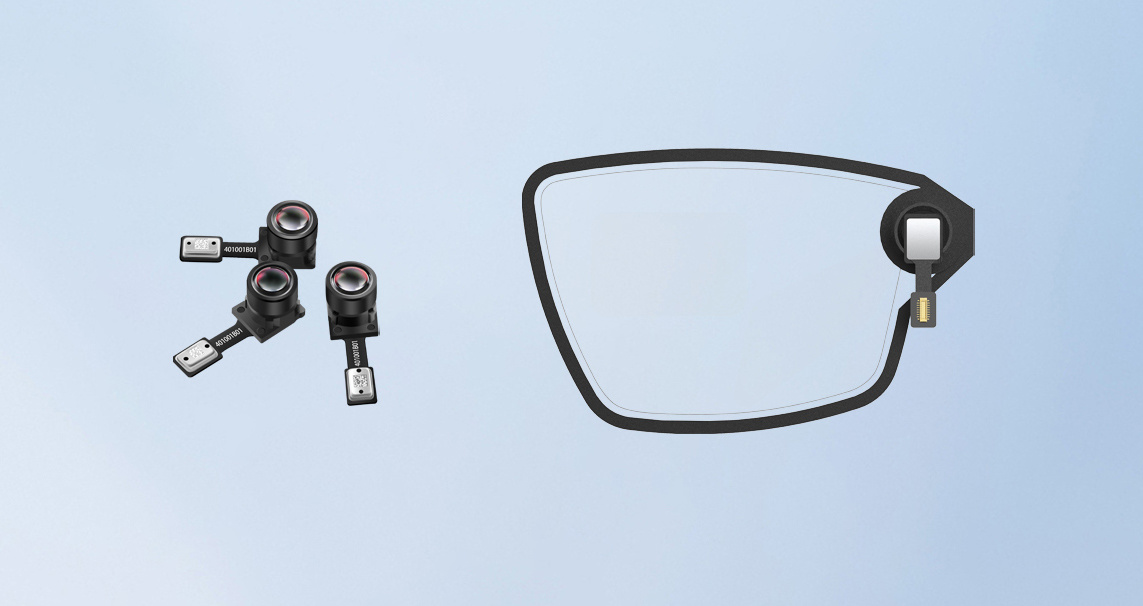
After years of development, OST technology has matured substantially and is now incorporated into a range of AR products. Waveguide optics have emerged as the leading OST solution, thanks to high light-transmittance, a compact form factor, and design flexibility—attributes closely aligned with the industry’s shift toward lighter, more streamlined AR devices.
In the realm of microdisplays, MicroLED is increasingly recognized as the technology of choice for near-eye AR solutions. Offering remarkable brightness, tiny footprints, and low power consumption, MicroLED meets the stringent demands of AR eyewear. When paired with waveguide optics—whose low efficiency dictates higher brightness requirements—MicroLED proves especially advantageous.
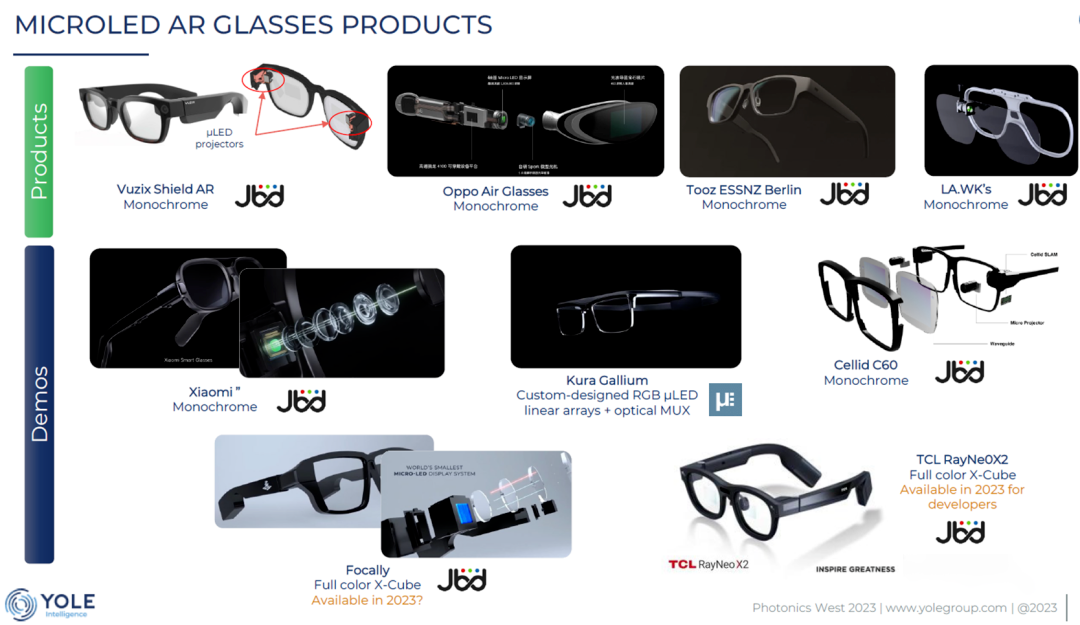
Source: Yole
According to statistics from Yole, the majority of lightweight MicroLED-based AR glasses released in 2022 utilized JBD technology, underscoring how these advances are accelerating AR’s move into the consumer market. By the close of 2024, more than 30 AR glasses built on JBD solutions are expected to be in circulation.
3. Advancing Manufacturing and Mass-Production Capabilities
Overcoming manufacturing challenges is vital for XR to reach mainstream audiences. As waveguide optics edge closer to maturity, the spotlight has shifted to scaling up MicroLED projectors. Founded in 2015, JBD has harnessed its expertise in MicroLED microdisplays to achieve industry-first mass production in 2021—a pivotal milestone enabling many of the AR devices mentioned above.
Simultaneously, JBD continues to enhance MicroLED performance, breaking new ground in light output. Current levels surpass 10 million nits for green light, 2 million nits for blue, and 1.5 million nits for red.
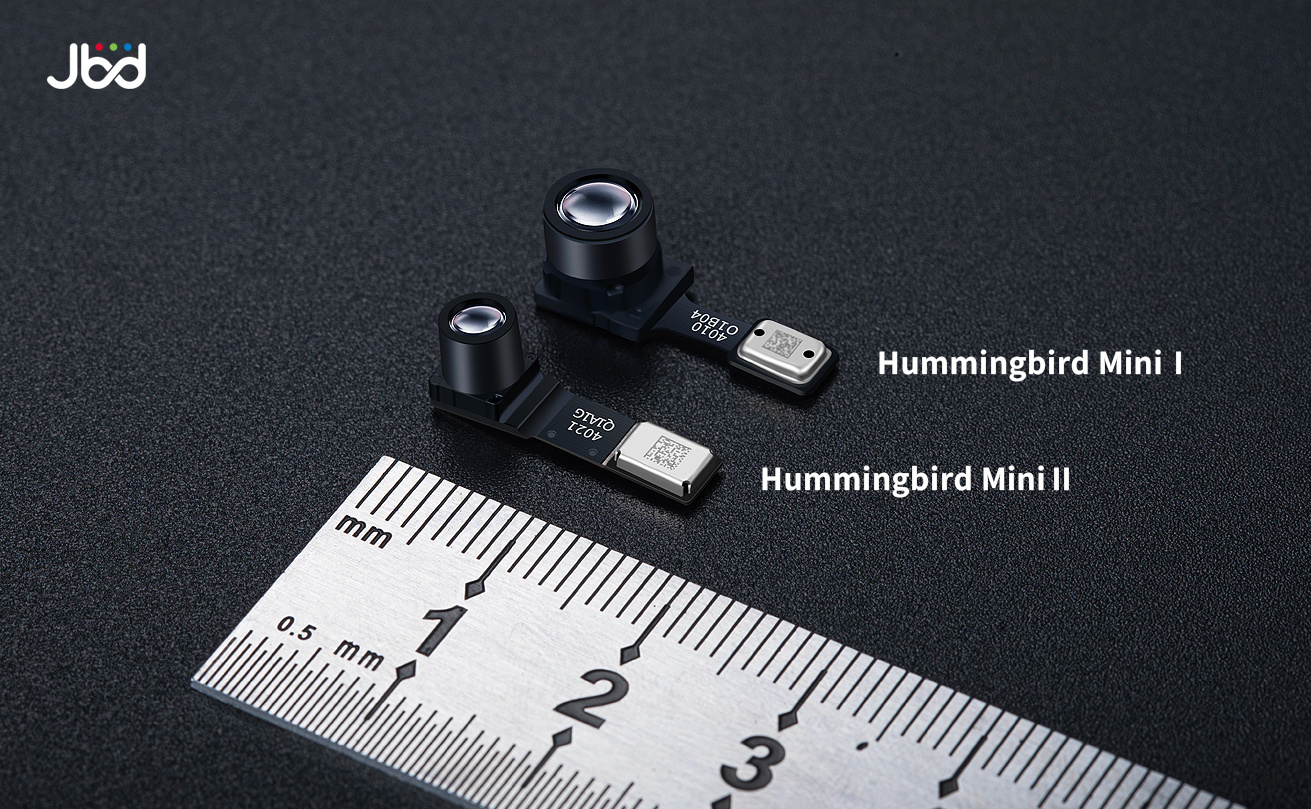
In response to the prevailing push for lighter AR designs, JBD is iterating on its MicroLED projectors at a rapid clip. Its 2021 Hummingbird Mini I measured just 0.3 cc in volume, while the 2024 Hummingbird Mini II has been reduced to 0.15 cc, making it small enough to embed seamlessly in an eyeglass temple. The newly introduced Hummingbird I full-color optical module achieves over 6,000 nits in-eye brightness—significantly higher than the traditional 1,500-nit ceiling for color waveguide displays—ensuring excellent visuals even under bright outdoor conditions.
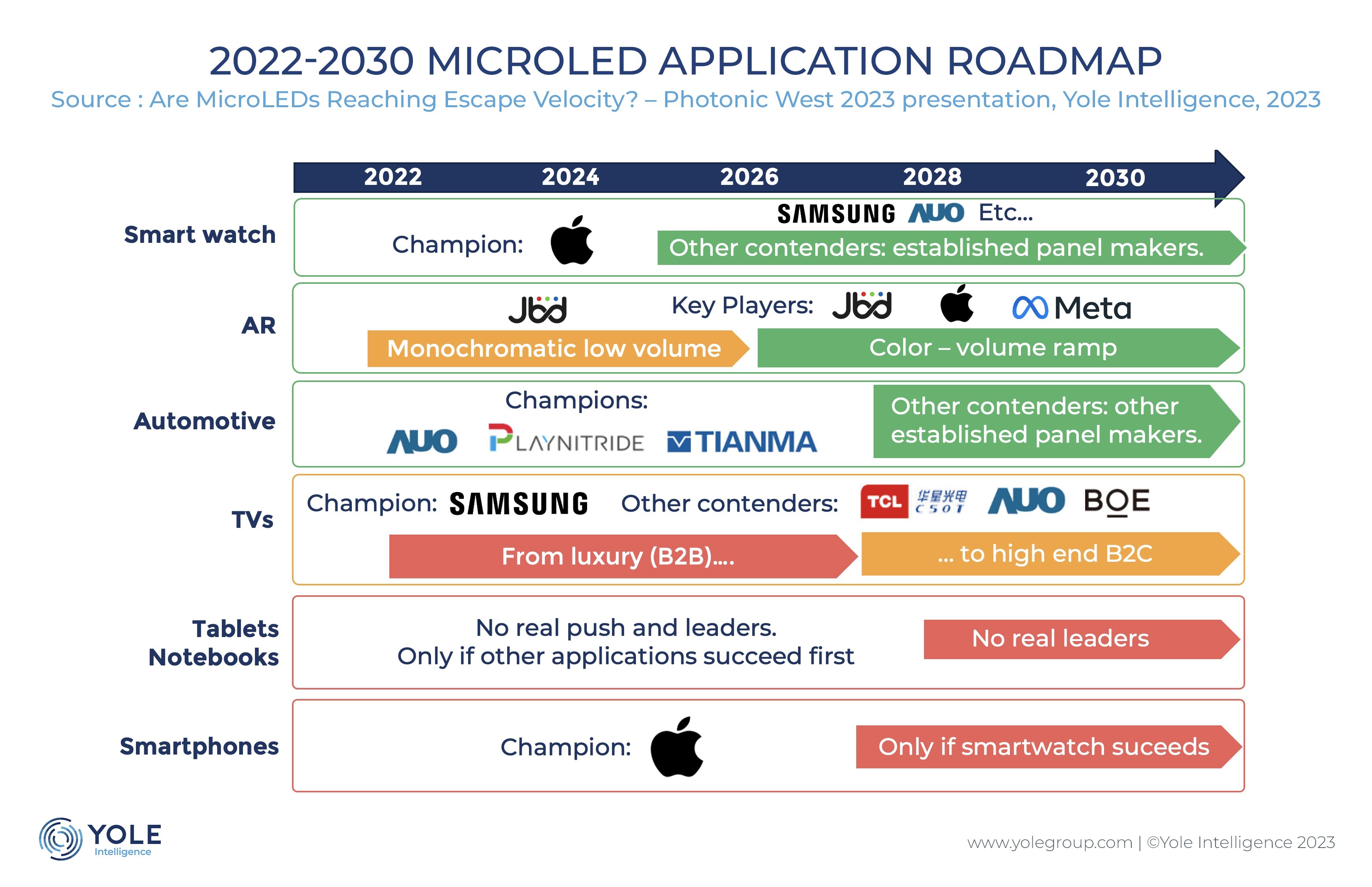
Source: Yole
Citing these achievements, Yole has listed JBD among the key players—alongside Apple and Meta—poised to shape MicroLED adoption in AR between 2022 and 2030.[2]
4. Conclusion
By resolving bottlenecks in product positioning, technical roadmap, and manufacturing capabilities, the AR industry stands on the cusp of fresh opportunities. Consumer electronics brands and supply-chain partners have made significant strides, fueling technological progress and accelerating product refinement. As these advances continue, AR is set to permeate a broader range of applications, emerging as a core technology of the next digital era.
References
[1]. https://www.idc.com/getdoc.jsp?containerId=prUS52598524
[2]. https://www.yolegroup.com/strategy-insights/a-decade-later-apples-microled-smartwatch

 Display
Display




